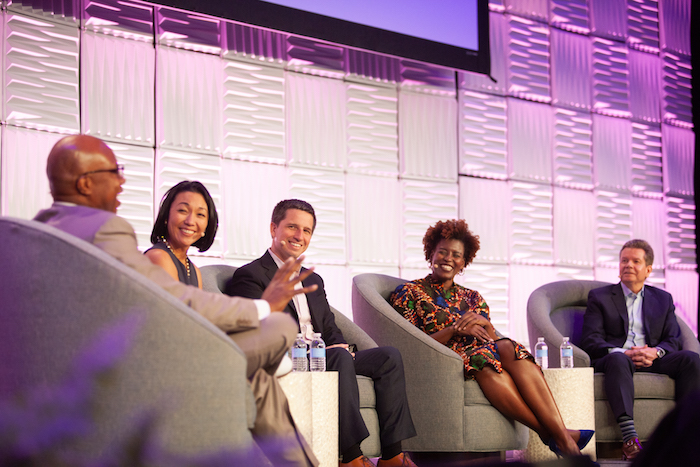Corporate Leaders on What’s Top of Mind
By John Elsasser
December 2019
During the networking luncheon on Oct. 21, five PR executives from leading brands came together to discuss the challenges and opportunities that communicators face in the corporate sector. Errol Cockfield, senior vice president, communications, MSNBC and NBC News, served as the moderator. Here are several highlights from the 45-minute discussion.
Controversial issues
Ivy Grant, vice president and chief of staff, customer care, Walmart eCommerce: “Gun control has always been a divisive issue. But with Walmart having, in August, a couple of [shootings] that occurred in our stores in Mississippi and Texas, Doug McMillon, our CEO, said that we are going to lead on this issue. We’ve struggled to tell a story that encompasses our past of traditional values — with stores in rural areas where guns are recreational and part of that culture — and that new customer on Walmart.com, who is in urban areas.”
Dave Samson, general manager, public affairs, Chevron Corp.: “When you take a principled stand, you’ve got to stick with it. I worked at Levi Strauss in the 1990s, and we said we would stop funding the Boy Scouts. [At the time, the Boy Scouts of America did not admit gay Scoutmasters and Scouts.] It was controversial inside our company because our headquarters was in San Francisco. But we took the decision because of our values on diversity. And we stuck with it.”
Social media’s impact
Cheryll Forsatz, vice president, corporate communications, Ferrero USA: “We see reporters tweeting questions, and brands racing to respond. [It used to be that if] a crisis happens, you would have an hour to prepare a media statement. But between the quickness of the news cycle and the speed of Twitter, you don’t even have 30 minutes to get a response out there.”
Kent Landers, APR, vice president, external communications, Coca-Cola, North America: “Social media is like a real-time focus group. If you think back to the way you would’ve gotten information from consumers [before social media] and how they were reacting to your messaging, it could take weeks. And now, if you’re in the middle of a difficult situation, you can evolve that messaging quickly. But it’s hard.”
Grant: “We spend a lot of time looking at reviews of products. But you can’t respond to everything. That prioritization you set beforehand becomes important, so you can deploy your resources to the right things.”
The future of press releases
Landers: “The press release still has a purpose, certainly for financial and disclosure reasons. But at Coke, we were one of the first companies to push the way 7-8 years ago on “brand journalism,” to tell our own stories in a shrinking media environment. It brought a lot more color and context and great digital storytelling than a traditional press release ever could.
The new pivot is that [consumers] go to a website for a function such as e-commerce, and not as much for information. You consume media and information in all these other places — your social feeds, etc. The storytelling arc has moved from web-based to highly targeted, short-form digital on your phone. A press release is not going to do that.”
Samson: “From a financial standpoint, the thing that’s changing today is that if you put out an earnings release, the initial story written by AP, Reuters or Bloomberg is generated by bots. When we issue an earnings release or we’re doing an acquisition, getting the message right is more important now than ever... because some algorithm is going to pull out certain words and create a headline and the first story that goes across the wire. And those things still move markets.”
photo credit: albert chau



